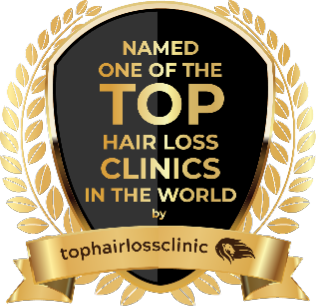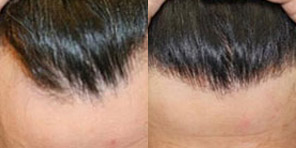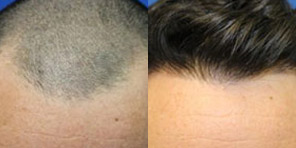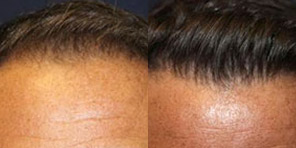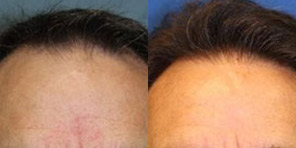Contents
What Is Hair Cloning?
Hair cloning refers to the ability to generate new, healthy hair follicles in a laboratory, which could then be transplanted into balding areas of the scalp. This concept offers hope for people with advanced hair loss or limited donor hair who are not good candidates for traditional hair transplantation.
Is Hair Cloning Available Yet?
Not yet — but we’re getting closer.
Researchers have already shown that it’s possible to grow hair follicle-like structures in the lab using stem cells and advanced 3D culture techniques. These follicles have successfully produced hair in mice and are being refined for future use in humans.
Our Direct Role in Hair Cloning Research
At California Hair MD, our commitment goes beyond clinical care. Dr. Richard Chaffoo, America’s First Triple Board Certified Hair Transplant Plastic Surgeon, served as a medical advisor to Stemson Therapeutics, a biotech company focused on hair follicle regeneration.
As part of that collaboration, our team contributed human hair follicle tissue from transplant patients to Stemson’s foundational research. These studies helped demonstrate how patient-derived cells could be used to bioengineer hair follicles — a key step toward future clinical applications.
Stemson’s Research Legacy
Although Stemson Therapeutics has since closed, its impact on the field remains significant:
- The company’s research was published in the respected journal Plastic & Reconstructive Surgery.
- It was also featured in a medical textbook on regenerative therapies edited by Drs. Tonnard and Verpele.
- Discussions are already underway for a large-scale biotech company to continue the work Stemson began.
When Will Hair Cloning Be Available?
We are optimistic that with ongoing research and support from major scientific institutions, hair cloning could reach clinical trials within the next decade. While it’s not a treatment available today, it holds exciting potential for the future of hair restoration.
What Can You Do Now?
Until hair cloning becomes a reality, we offer the most advanced and effective solutions currently available, including:
- Enhanced, extended dual spin PRP therapy
- Extracellular matrix (ECM)-based regenerative treatments
- Medical therapy for both men and women
- FUE hair transplantation using personalized, precision technology
Our practice is guided by cutting-edge science — not hype. We’re proud to be part of the journey toward the future of hair restoration, and even prouder to offer you the best available treatments today.
Frequently Asked Questions
Is hair cloning available for patients today?
No, hair cloning is not yet available as a clinical treatment. However, promising research in the lab shows that it may become a reality within the next 5–10 years.
Who might benefit from hair cloning in the future?
Patients with advanced hair loss, limited donor hair, or scarring alopecia may benefit most from hair cloning once it’s available, as it could allow doctors to generate an unlimited supply of hair follicles.
What role did California Hair MD play in hair cloning research?
Dr. Richard Chaffoo, our founder, served as a medical advisor to Stemson Therapeutics and provided human hair follicles from patients to support research into regenerating hair using bioengineered cells.
Why did Stemson Therapeutics close down?
Stemson closed due to internal strategic decisions, but its groundbreaking research has been published in top medical journals and textbooks. The work is expected to continue through a large-scale biotech company.
What should I do if I’m experiencing hair loss now?
While cloning isn’t yet available, we offer advanced treatments like enhanced PRP, ECM therapy, medical hair loss treatments, and FUE hair transplantation using personalized technology tailored to each patient.
References
- Antonella Pinto, PhD; Richard AK Chaffoo, MD; and Alexey V. Terskikh, PhD. The Rise of Induced Pluripotent Stem Cell Approach to Hair Restoration. Plastic and Reconstructive Surgery. December 2024. 154(6):1363
- Tonnard, Verpele. The Wave of Regenerative Therapy. Textbook in print. 2025, Springer Pub.

